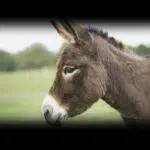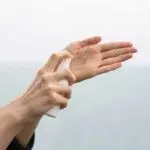Kodomo no Hi, or Children’s Day is a Japanese holiday celebrated on May 5 every year. It is meant to respect children’s individuality and to celebrate their happiness. Kodomo no Hi was deemed a national holiday in 1948 by the Japanese government but has been celebrated for much longer. On this day, families raise ‘koinobori,’ or carp-shaped windsocks, with different colored carps for different members of the family. Before switching over to the Gregorian calendar, the holiday was celebrated on the fifth day of the fifth moon in the Chinese calendar.
History of Children's Day (Kodomo no Hi)
Kodomo no Hi was first celebrated as Tango no Sekku and was one of the five annual ceremonies held at the imperial court, called Gosekku. It is the Japanese equivalent of Double Fifth and was celebrated on the fifth day of the fifth moon in the Chinese calendar. The date was moved to May 5 when Japan switched over to the Gregorian calendar.
It is believed that Tango no Sekku was first celebrated during the reign of Empress Suiko, the 33rd monarch of Japan. It was first assigned to the fifth day of the fifth month after the Nara period in Japanese history. Until 1948, Tango no Sekku was known as Boys’ Day, with a separate Girls’ Day. However, on March 3, 1948, the Japanese government declared that this day was to be a national holiday, renamed Kodomo no Hi, meant to celebrate the happiness of all children, regardless of gender, and to express gratitude for mothers.
On this day, families raise koinobori, or carp-shaped windsocks, with a black carp to represent the father, a red or pink carp to represent the mother, and one green, orange, or blue carp for each child in the family. This tradition is based on a Chinese legend of a carp swimming upstream and becoming a dragon.
Children's Day (Kodomo no Hi) timeline
Tango no Sekku is celebrated for the first time.
Tango no Sekku is celebrated on the fifth day of the fifth month of the Chinese calendar.
Japan switches to the Gregorian calendar.
The government declares May 5 as Kodomo no Hi, or Children’s Day.
Children's Day (Kodomo no Hi) FAQs
What are the fish on Kodomo no Hi?
They are carp.
What was Kodomo no Hi originally called?
Kodomo no hi was initially called Tango no Sekku.
What do they put in the bath water on Kodomo no Hi?
On Kodomo no Hi, Japanese people often put sweet flag roots and leaves in water.
How to Observe Children's Day (Kodomo no Hi)
Read up on Kodomo no Hi traditions and history
Kodomo no Hi is a wonderful festival. Look up its history and traditions.
Watch children’s media
If you want a relaxing activity for today, put on a children’s film. You can’t go wrong with any Studio Ghibli movie!
Spend time with the children in your life
If you’re so inclined, spend the day with your kids, nieces and nephews, siblings, or cousins. They’re sure to appreciate quality time with you
5 Facts About Childhood Development
Toddlers laugh 300 times a day
Children tend to laugh about 300 times per day, whilst adults usually laugh about 20 times in the same period.
Kids have issues with selective hearing
Kids can have trouble separating background noises from voices, making it harder for them to respond to direct words.
Most children are right-handed
About 90% of children are born right-handed.
Children begin watching T.V. at five months
Babies begin watching and paying attention to T.V. at about five months of age.
Babies develop color vision after birth
Children are born able to see only in black and white and their color vision develops a while after birth.
Why Children's Day (Kodomo no Hi) is Important
It’s an excuse to learn about a culture
Kodomo no Hi is deeply entrenched in Japanese culture. The day is an opportunity to learn more about a culture.
It celebrates children
Children are wonderful beings of pure potential. Kodomo no Hi celebrates them.
It celebrates individuality
Individuality is very often not given importance, especially in children. Kodomo no Hi is a good reminder to celebrate what makes each child wonderful and worthy of celebration.
Children's Day (Kodomo no Hi) dates
| Year | Date | Day |
|---|---|---|
| 2026 | May 5 | Tuesday |
| 2027 | May 5 | Wednesday |
| 2028 | May 5 | Friday |
| 2029 | May 5 | Saturday |
| 2030 | May 5 | Sunday |


























